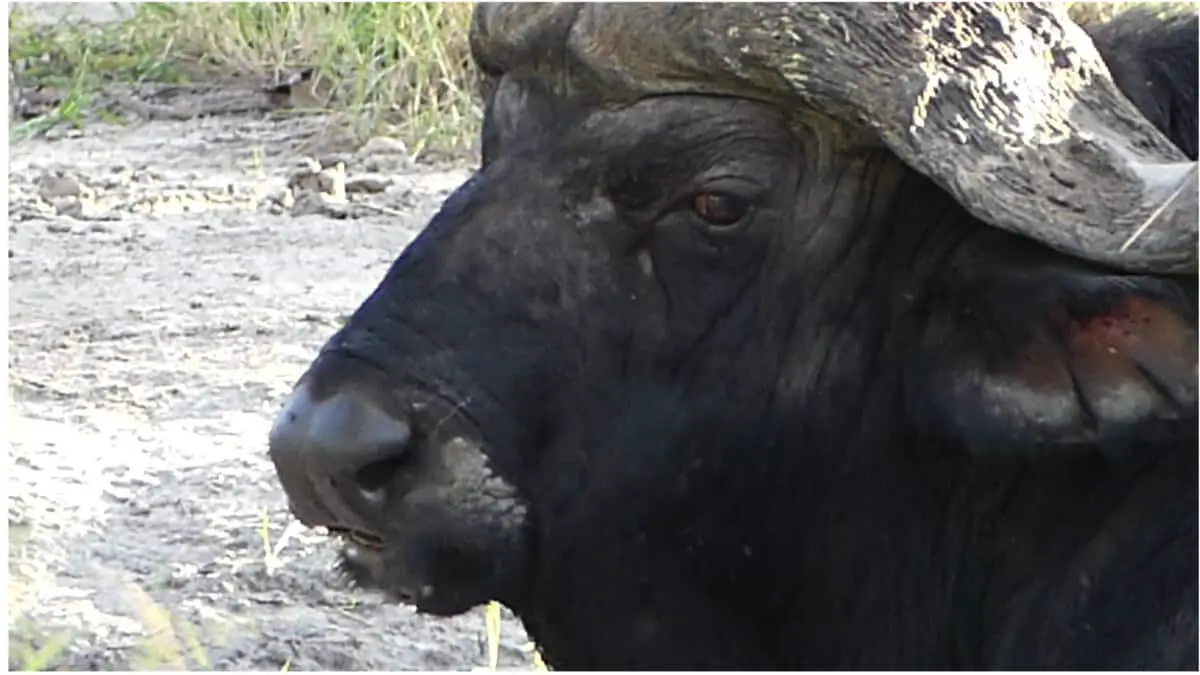With our biology backgrounds, extensive research, and five trips to South Africa and Botswana, my husband and I have learned how to enjoy and stay safe with top predators.
If you plan well, learn the safety rules, and obey them, you can have a safe safari. The safest way to view Africa’s predators is from inside a safari vehicle with an experienced guide. In National Parks and private game reserves, wild animals treat the safari vehicles as non-threatening objects within their territory and tend to ignore them.
Is it safe to go on safari in Africa?
Yes, it is much safer to go on a safari in Africa than it is to drive on a highway in North America. By learning how to avoid conflict with African predators and by laughing at our beginner mistakes, you can enjoy a safe safari. There are also some surprising threats to avoid such as malarial mosquitoes, sneaky Cape buffalo, black mambas, and packs of hyenas.
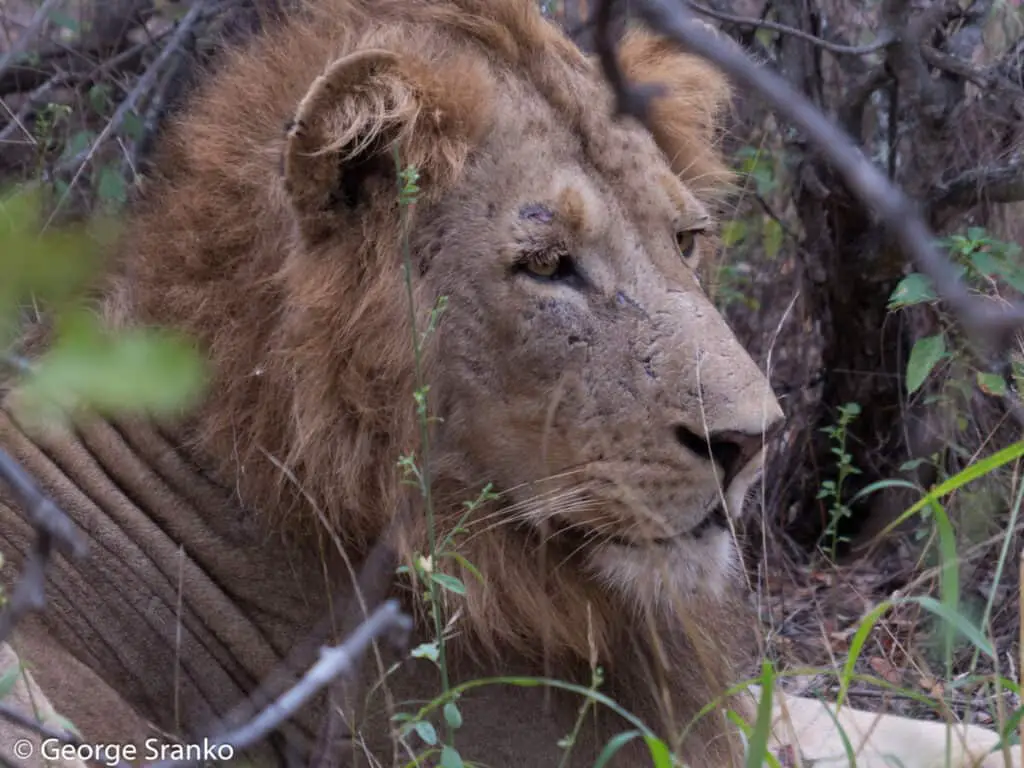
Planning our first visit, we wanted to explore the wilder parts of Kruger National Park, one of the world’s largest National Parks and wildlife sanctuaries. The park is 220 mi (360 km) long, and a daunting 7,523 sq mi (19,500 sq km) in size – nearly the size of Belgium. This is “lion country,” and they attack approximately 10 unprepared people a year who make the mistake of walking at night.
When I searched for answers to this question about safety, I laughed when what came up was “Plan an Affordable African Safari.” Obviously, there are lots of people like my family who want to see Africa’s amazing wild creatures without breaking the budget and they want to keep safe. We especially wanted A Safe First Trip, so we splurged for five days at a private game lodge.
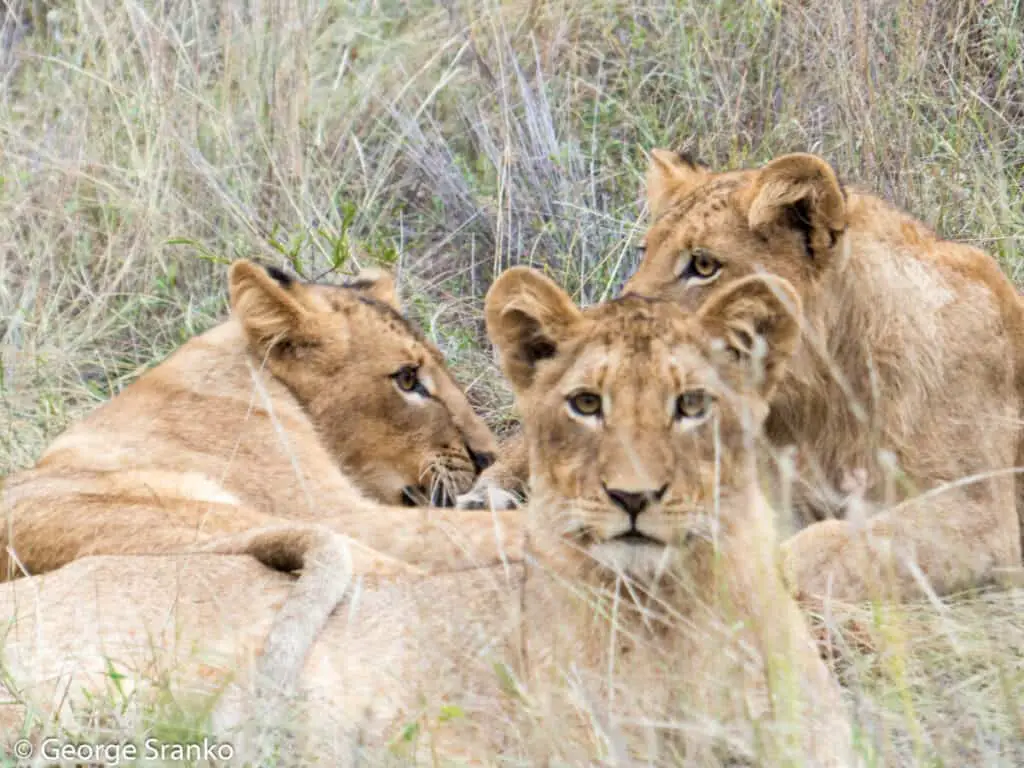
Is a safari for you?
A well-respected safari is not cheap, but it is invaluable for the safety it provides, especially if you are new to wildlife adventures in Africa or you plan to take your children. If you are concerned about mosquitoes, you will find beds with mosquito nets that don’t have holes and are properly set up for you at bedtime. Your room will be cleaned each day and there’s very little chance of a snake slipping under your bed.

Do animals attack safari vehicles?

Even an open safari vehicle is safe. If you are a first-time safari tourist it may feel unprotected, but thousands of game drives are conducted every day in open vehicles without any problem. In the game reserves, the animals ignore the hefty safari vehicles since they do not see the big rolling objects as prey nor associate them with food.
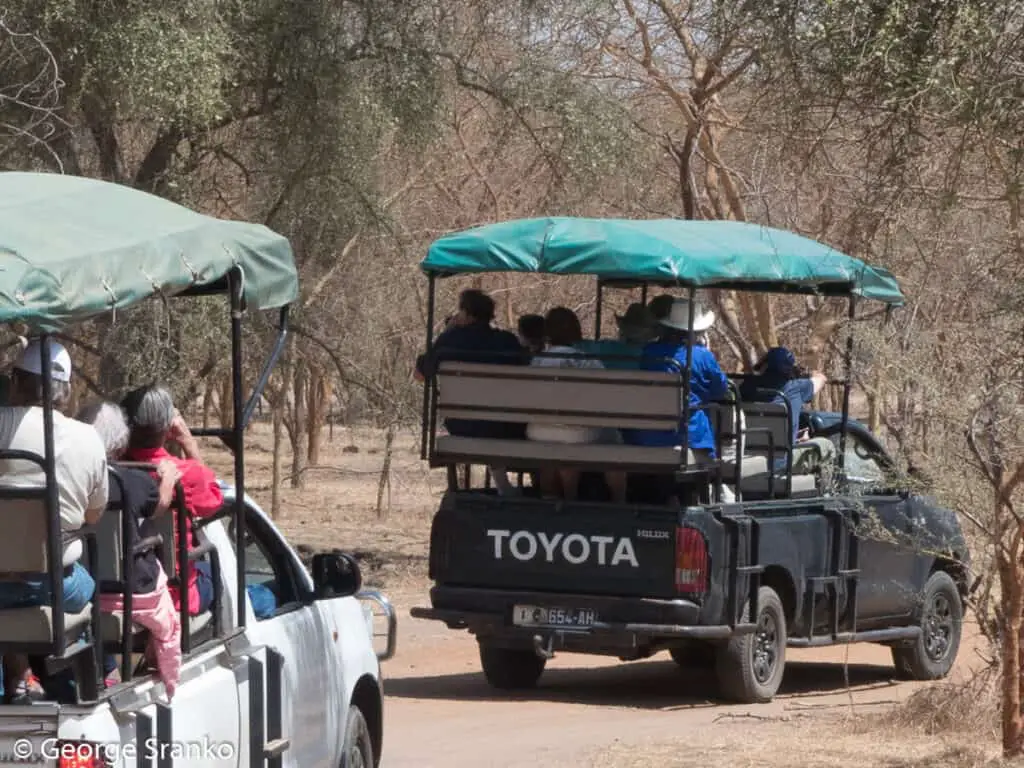
Rarely, though, a safari vehicle might be chased and sometimes even pushed by a big bull elephant in musth.

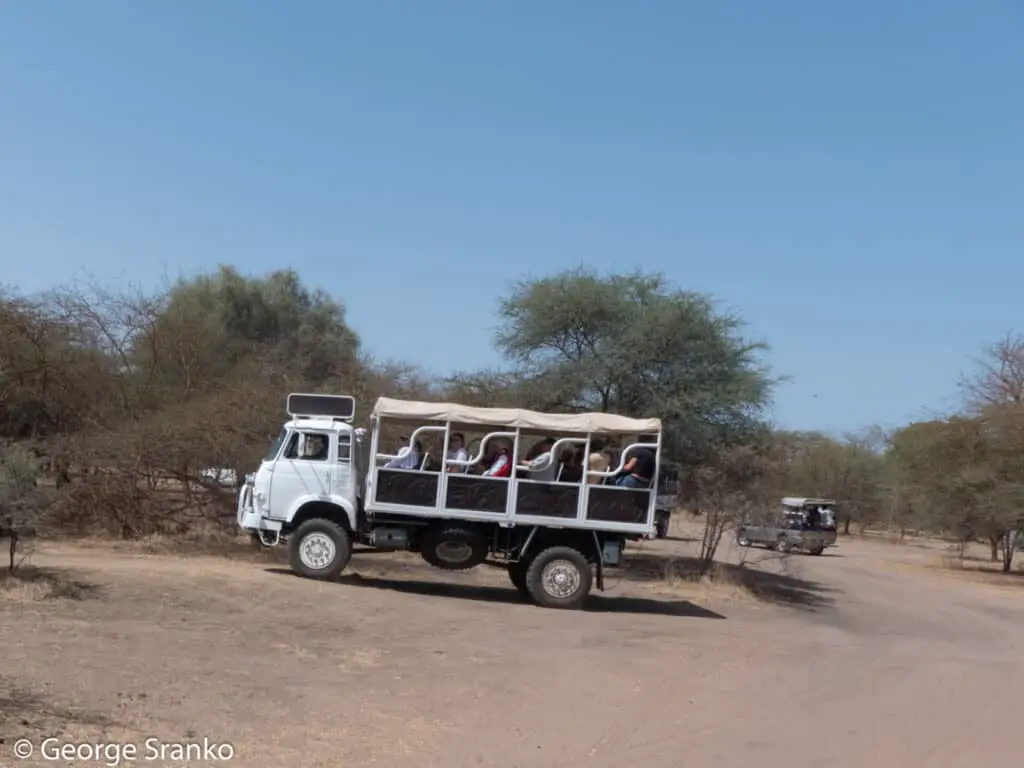
Is it safe to walk in the bush?
Yes, if you go with an experienced guide you can safely enjoy walking in the bush. Choose a lodge or safari trip that offers guided walks. Your guide will carefully watch for crocodiles and hippos near rivers and will keep an eye out for snakes hidden in the grass. Guides may carry a rifle on the off chance of a surprise attack. The National Geographic warns that antivenom is not readily available in Africa so walking alone in deadly snake territory is not recommended.
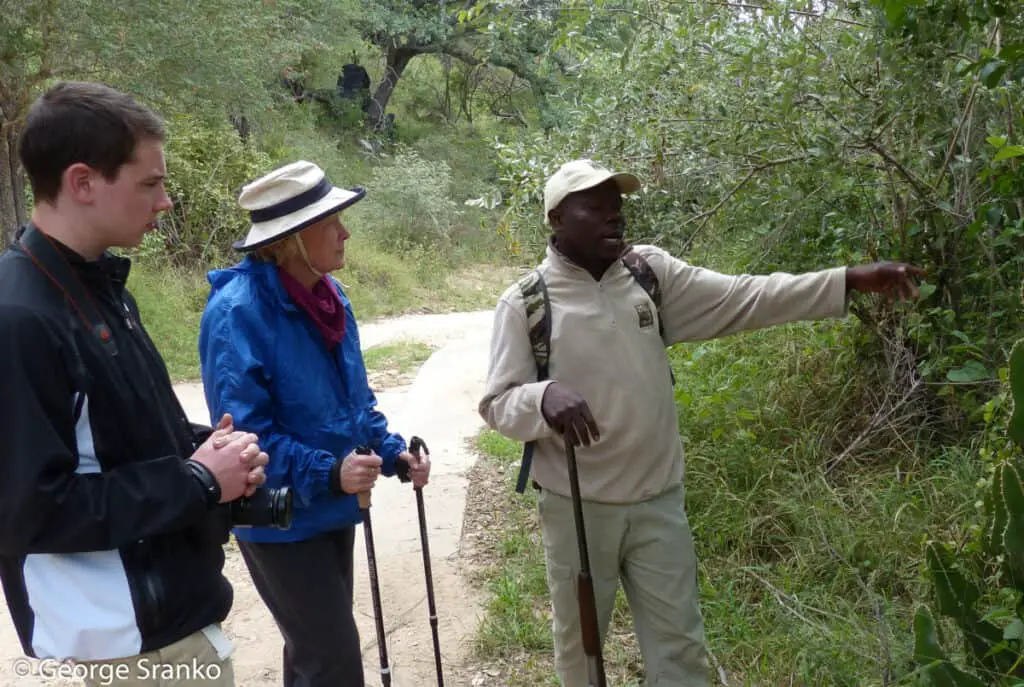
Are private game reserves worth the cost?
I think they are worth the cost if it fits your budget, you’re looking for safety and an opportunity to see more wildlife up close with top guides. The skilled guides on staff understand wildlife behavior. For example, they know when to retreat and can drive in reverse at top speed to avoid confrontations with bull elephants.
At our lodge we started every day with a 4:30 am wake-up call for dawn patrol, usually the best time to see nocturnal wildlife like leopards heading home. The private lodges allow off-road driving to see elusive creatures like elusive leopards and African wild dogs, whereas in the National Parks you are limited to the road.

We chose Naledi Game Lodge because it’s an award-winning wildlife safari and lodge in the greater Kruger National Park area, open to the National Park without fencing. We wanted the small group experience and education they could provide. Their local guides were born and grew up on this land and are great trackers. They keep close track of the locations of the various animals. So, when one of the lion prides was full after a big feast of antelope, they safely took us to study and photograph the animals up close.
When we went for walks outside the electric fence our guide carried a rifle. The rifles were meant only for an unusual emergency and the guides explained that it would break their hearts to have to injure an animal. When we came across the signs of an elusive leopard dragging an antelope, our tracker went on his own to see if the leopard was feeding in a cleft in the rocks. He reported back that the leopard had left his kill.
Early the next morning we drove back to see if the leopard was feeding on its antelope. The tracks showed the antelope had been dragged to the river – by a crocodile scavenging at night!
The first two safety lessons we learned about going on a drive in an open safari vehicle:
1) Don’t stand up in the vehicle to get a better look or for a better photo angle.
2) Never get out of the vehicle without the guide’s okay.
Our guides continually amazed us with their knowledge of not just the big five but all the creatures we saw great and small.
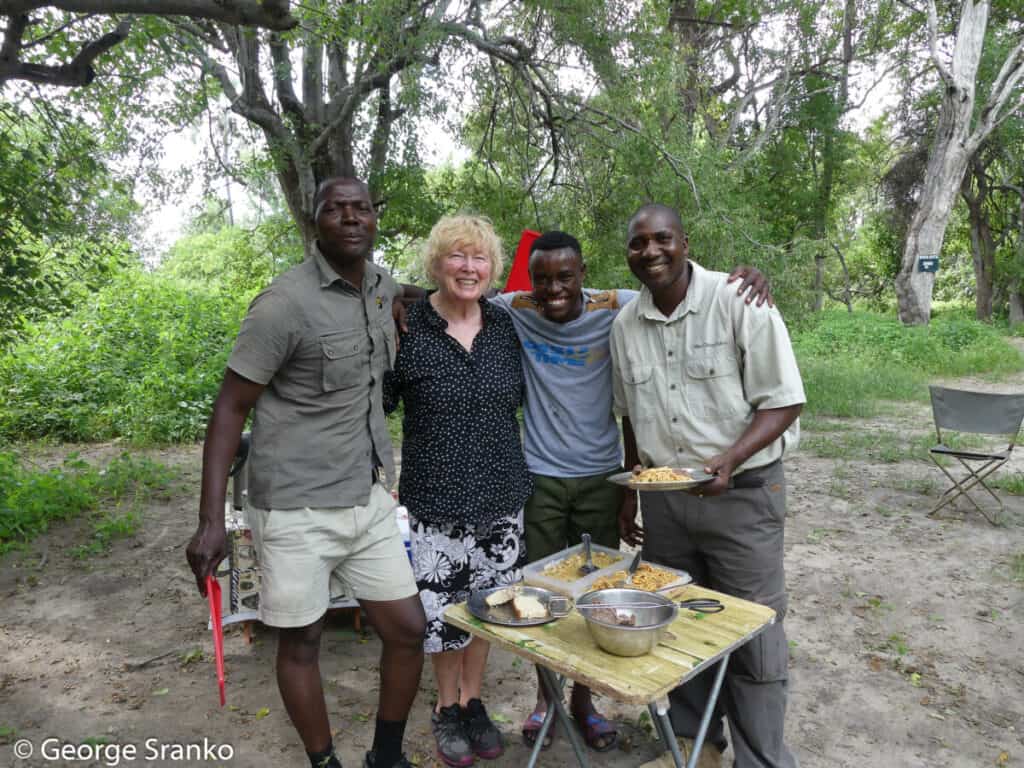
Is it safe to drive on your own in Kruger?
Yes, if you follow the rules and are careful! Kruger is where the average South African family goes on safari and it is set up for safety. There are fenced rest areas with tent sites or cabins for rent. Most have a restaurant, plus a small grocery and souvenir shop.
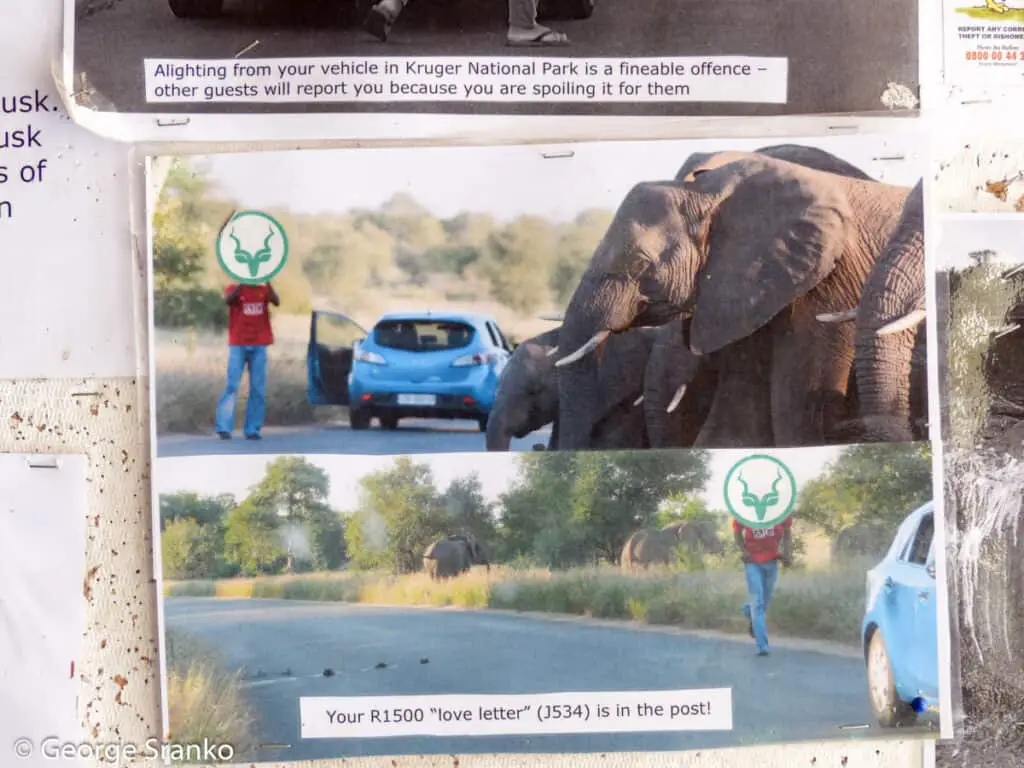
One of the big bonuses is the price of the National Park safaris is about $30 per person. You can take both early morning and evening safaris in a 20-passenger vehicle. We saw our first leopard on an early morning trip and had an interesting encounter with a bull elephant in musth. Our guide told us our truck was too big even for this big guy to attack but as we drove away, the bull put on a good show of chasing us down the road!
Kruger is one of the best safari deals in Africa! Read our article to learn more.
Will I be attacked by a wild animal while on safari?
The chances of being attacked while on safari are very slim. Kruger NP, one of South Africa’s top destinations, attracts more than one million visitors annually and it’s estimated that one person a year might die.
Skilled guides who understand elephant behavior seldom have confrontations with elephants, because they know when and how to back off. Guides practice driving backwards for times when a bull elephant comes around a bend in a BAD mood. Might be a good idea to practice your backwards driving skills at home! It’s amazing to watch this being done on YouTube.
Our wonderful guide in Botswana, Scar, told us stories that scared us enough to gain a higher level of respect for the Big Five! “Big Five” originally referred to the difficulty of hunting the lion, leopard, rhino, elephant and African buffalo. These five large African mammal species were known to be dangerous and it was considered a feat by trophy hunters to bring them home. Today these animals are protected in the National Parks and game reserves and are hunted mainly with cameras.
Do elephants attack cars? – yes, but not often!
Elephants, usually our beloved gentle giants, can be protective or become annoyed by a vehicle that approaches too closely. Revving the engine or honking the horn would be a bad idea! They could react by pushing or leaning on the vehicle, or even flipping it over. This applies to both matriarchs protecting young calves and bull elephants in musth. A bull elephant in musth is in pain and is especially dangerous. He has testosterone levels over 60 times higher than usual and will attack anything smaller than himself that comes too close.
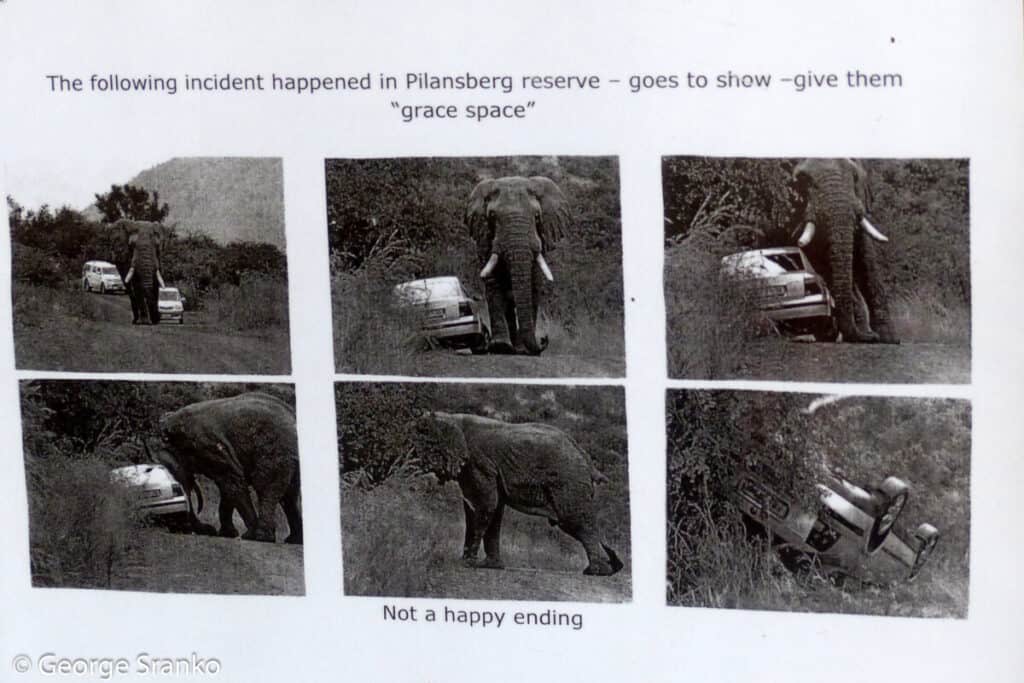
How do you avoid being attacked by an elephant?
On our first day in Kruger we broke a safety rule without knowing it and it could have ended badly for our vehicle and us! Before leaving home, we read the informative and inspiring book, “The Elephant Whisperer” by Lawrence Anthony, and thought we were prepared.
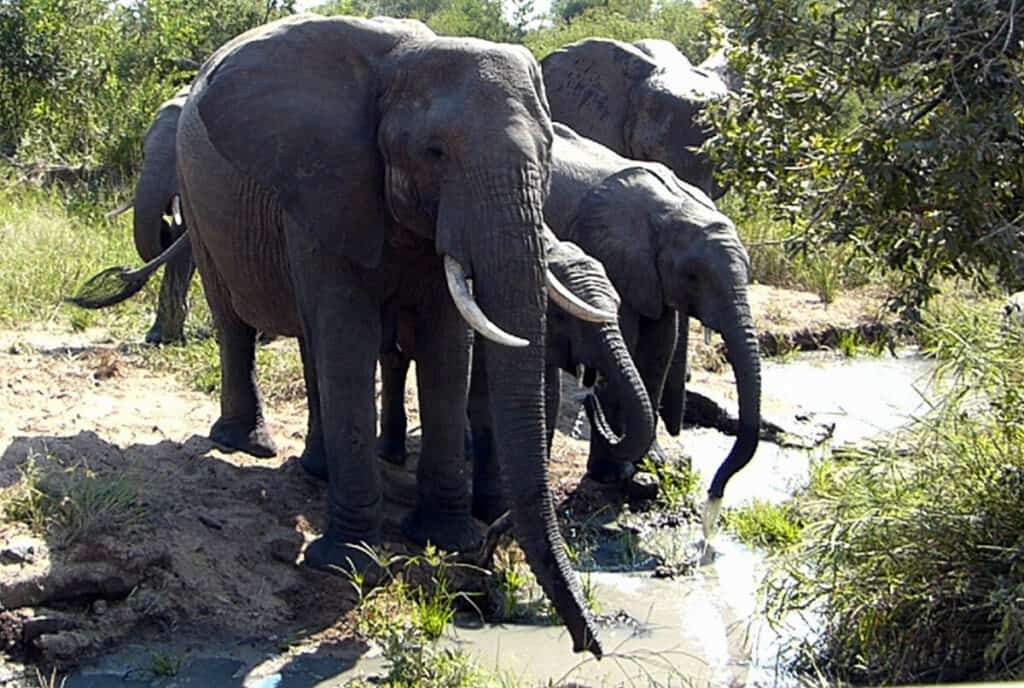
We knew, of course, that you yield the right-of-way to any 7 to 10-ton animal. We stopped our car for a large female matriarch calmly leading her family across the road about 50 feet in front of us. Sitting perfectly still, we quietly took pictures and whispered!
A medium sized elephant lagged behind the rest of the herd and suddenly stopped right in front of our car. He was a bull! He gave us the evil eye and moved towards us flapping his ears and trumpeting – a warning to back off! We froze like deer caught in the headlights, afraid to annoy him by turning on our engine. WRONG response.
We were lucky he was young and not in musth. He just wanted to let us know who was in charge. Now we know enough to always keep the engine running, leave LOTS of room and back up as soon as an elephant displays aggression. We’ve seen pictures of cars in Kruger that have been flipped and flattened by elephants. They aren’t predatory but they do rank number five on the most dangerous animals list
Most Dangerous Animals in Africa
| DANGEROUS ANIMAL | People Killed per year | Tips |
| 1. Mosquitoes: Malaria, Dengue & Yellow Fever | 725,000+ | Get your yellow fever shot. Check conditions ahead of time. Use antimalarials, repellent, long pants, and long sleeves. |
| 2. Snakes: Puff Adders Vipers, Black mambas | 50,000 + | Watch carefully when walking, stay behind the guide, avoid sleeping on the ground, check your shoes. Antivenom is not easily available in remote camps. |
| 3. Hippos | 1,000 | Avoid rivers if without a guide. Hippos often graze far away from the water. Don’t get between mother and baby hippo |
| 4. Crocodiles | 1,000 | Avoid rivers & banks unless with a guide |
| 5. Rhinos | 600 | Bad tempered & aggressive |
| 6. Elephants | 500 | Keep 75-100 yd away. If threatened, back away slowly with your vehicle. |
| 7. Cape Buffalo | 200 | Stay in vehicle and avoid close contact |
| 8. Lions | 200 | Stay quietly in vehicle, leave windows closed, back up if threatened |
| 9. Hyenas | Few | Packs can kill men, but mostly attack children & women |
| 10. Monkeys & baboons | Dangerous Bites | Monkeys and baboons that have lost their fear of humans can leap on you if you have food in your hand – drop any food and back off! |
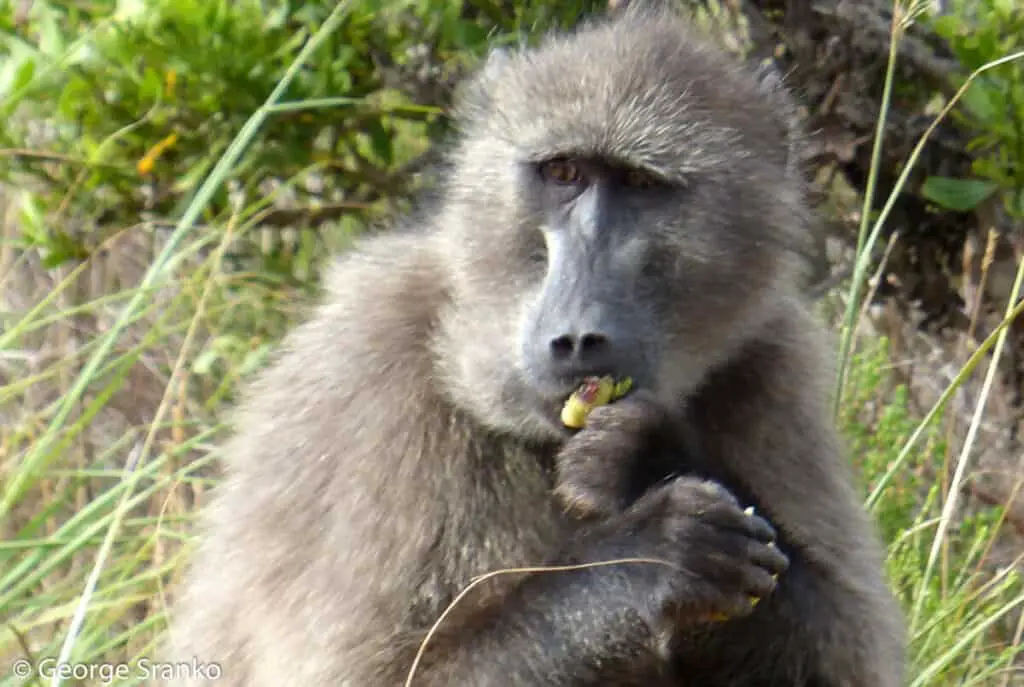
What is the most dangerous animal in the World? The tiny mosquito!
The biggest killers in the world are mosquitoes like those in the Anopheles group that kill over a million people a year.
GOOD NEWS: You can easily avoid most mosquitoes in southern Africa by avoiding the hot summer rains November to March. The winter months of May to August are generally malaria and mosquito-free in South Africa. One bonus is that it is easier to spot wildlife during the dry season, when the savanna vegetation is shorter.
We usually go in April or May to Kruger when there are only 2 or 3 days a month with rain and we haven’t been bothered by mosquitoes during the day when we’re outside. See our article on finding the best time to visit any destination.
The World Health Organizations ranks Dengue Fever (Break bone fever) as a most important mosquito-borne virus disease. It is spread by the Asian tiger mosquito, Aedes aegypti. There is no vaccine and there are 20 million cases a year with a mortality rate of about 20 percent for severe infections.
Don’t repeat my mistake! I caught Dengue or “break bone fever” in a Fijian wetland in 1985. I was naïve and the mosquitoes caught me by surprise after I’d fallen asleep. A few days later I had a high fever and horrible pain in my joints. I thought I had a terrible flu.
We flew home and I was admitted to our rural hospital in pain and with non stop vomiting. I was rehydrated and cared for but not diagnosed. There were several years of fatigue and painful joints which was called chronic fatigue. It wasn’t until I met someone several years later in Australia, who had the same recurring symptoms. He had been diagnosed in a tropical disease centre and warned me not to get a second bout of Dengue because it would be worse.
Now I like to be prepared and worry less. In addition to routine vaccinations, yellow fever and an up to date tetanus shot, I like to be prepared for cholera, hepatitis A and typhoid. This way I can eat anything that looks good and not miss any local treats.
Each person will have different preferences concerning avoiding mosquito diseases ranging from head to toe clothing, DEET and/or different medications. I avoid wet mosquito areas and come prepared with everything. I advise folks to talk to a doctor, well in advance, about the best form of protection for you. Medications and vaccinations usually need to be started before your trip, double vaccinations sometimes begin three months in advance.
In Southern Africa when a person presents with a high fever and severe pain in the joints, it‘s usually the less dangerous Chikungunya. This is common in the United States and causes lingering joint pain but isn’t deadly, but still a good reason to avoid mosquitoes. they find me as soon as I get out of the bed net at night. A good Travel Medical center will organize all your needs.
If you stay in high-end resorts, you may be fine without taking antimalarials. Your accommodation should be mosquito-free with screened windows and a secure net over the bed. Luckily for us, mosquitoes don’t like air conditioning or big fans.
What are the most dangerous snakes on safari?
Snakes kill about 20,000 to 32,000 people a year in Africa. Puff Adders are Africa’s deadliest snake, so it is wise to give them lots of space!
The puff adder, Bitis arietans, is a venomous species of viper found in savannah and grasslands. They grow up to 1 metre in length, and are solidly built with a thick girth. Their color patten differs depending on their location. Their habitat, extends throughout the entire African continent except for wet rainforests and deserts.
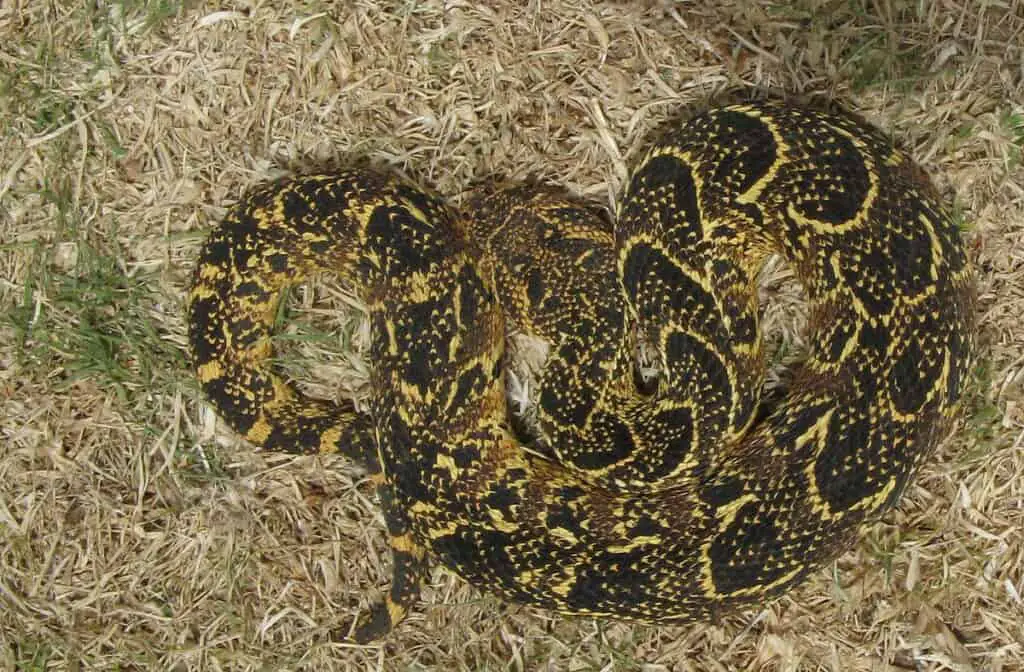
The puff adder boasts big fangs, with venom powerful enough to kill a grown man with a single bite. They depend on camouflage for protection and, if approached, will simply lie still – which makes them especially dangerous since they are so difficult to spot.
Black mambas – have a reputation for being extremely aggressive when cornered and don’t hesitate to attack. Their territory is in southern and eastern Africa. They are Africa’s longest venomous snake, reaching an average of 8 feet up to 14 feet in length. They are also among the fastest snakes in the world, slithering at speeds of up to 15 miles per hour.
How to stay safe in snake country
I bought a pair of thick double layer leather hiking boots to protect against snake bite, but I’ve never seen a venomous snake up close, except dead ones on the road or asleep at a distance. This is probably because on safari I always zip up my tent, never go walking through the bush without a guide, and I’m usually in the safety of a jeep.
The walking we did in Botswana was with a guide who knew the trail and was walking in front of us with a sharp eye out for snakes. We always zipped up our tent so snakes couldn’t slip in for a nap. It’s a good idea to always shake out your boots before putting your feet inside!
What’s the most dangerous mammal in Africa?
Hippos are more dangerous than lions or leopards! On our paddle trip in the Okavango, our local guide, Scar, not only knew the hippos along our route, he kept track of which channel they were feeding in and made sure he detoured around them. See our article explaining why hippos are so dangerous. Experienced guides cringe when they see how unaware tourists can be of the dangers posed by hippos!

Locals have good reason to be afraid of these dangerous animals. They are the world’s third largest land mammal and kill over 500 people a year. Many attacks happen when people are collecting water in the morning.
It’s debated how many people (500 – 1,000) per year die from hippo attacks. Hippos actively protect and defend their territories along the banks of rivers and lakes. Female hippos can also act out with extreme aggression if they sense a threat coming between them and their babies.
After dark, hippos graze on land often at a distance from their pool. It’s not possible to out run a hippo moving at 20 mph (32 kph) on land or 8 mph (13 kph) in the water.
How do you watch hippos safely?
Hippos are best admired with a guide or from inside a lodge beside the river.
As an example, when my back was sore and I was using a hiking pole, our Naledi guides very kindly adapted the safari to my needs. The jeep was our safe refuge for observation almost all the time, but there were hippos singing as part of their mating ritual. When we approached a hill overlooking the hippo pool, our guides apologized that this could be dangerous for me to get out. Hippos often wander away from the pool to graze and if you are between them and the water they become aggressive.
Our driver maneuvered the jeep beside a tree on the hill. I stood beside the tree a few feet from the jeep, scanning with my binoculars while the guide stood nearby with his rifle ready. My husband and the other guide scrambled over the rough terrain. I was delighted to clearly watch the hippos with their little ears twirling and pink nostrils peeking out of the water as they made loud snorts and piggy like sounds. I wouldn’t have taken this opportunity without a guide.
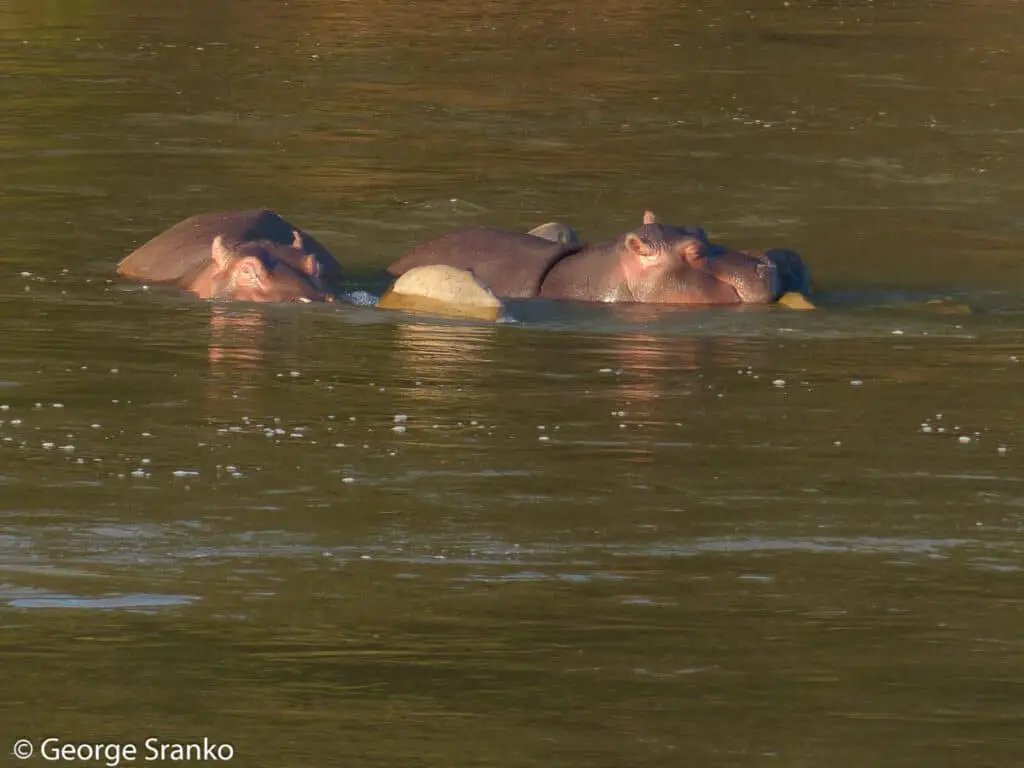
How do you avoid being killed by a crocodile?
Thousands of lethal attacks by hippos and crocodiles provide a warning to stay alert beside rivers and lakes. Nile Crocodiles are notoriously aggressive. They will go for anything that moves and manage to kill 1,000 people a year worldwide! There are many powerful predators roaming the savanna, but in rivers, freshwater marshes, and mangrove swamps, crocodiles are the apex predator.

Crocodiles are not stupid brutes – see our article about what researchers are learning about smart crocodiles.
Africa’s largest crocodiles can reach up to 20 feet (7 m) and can weigh up to 1,650 lb (750 kg). Usually they are about 16 feet (over 5 m) and 500 lb. (227 kg)
Crocodiles will kill baby hippos and have been known to break into a tent on a ridge above the river to attack the people sleeping inside. Most human fatalities occur when people are washing/collecting food near riverbanks or lake shores, or when fishermen take their boats in or out of the water.
My advice? Stay far away from rivers in Africa unless you are staying in a lodge.
Rhinoceros
Rhinos are notorious for being bad tempered and can charge at up to 40 miles per hour. It may be their poor eyesight that makes them easily feel threatened and aggressive. Females with their young are very protective and dangerous. Males prefer a solitary life unless they are enjoying a feast of succulent euphorbia. In Naledi we watched a couple of docile male rhinos stay munching on their juicy euphorbia for two days. Our native guide said the sap was an intoxicant for them.
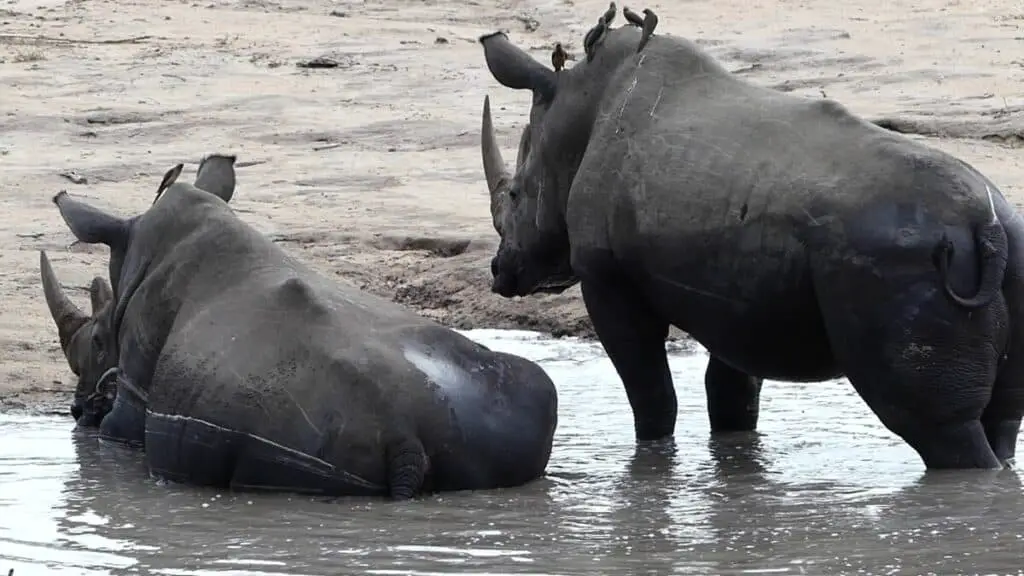
Rhinos look like one-ton armor-plated prehistoric tanks with their thick skin and two horns. They are vegetarians using their lips to pluck grasses or bushes. The white rhino has a flat upper lip for grazing while the black rhino has a tip on its upper lip for browsing.
Unfortunately, Rhinoceros are killed by poachers for their keratin horns. These are sold on the black market, especially for Asian buyers, and often for the same price as gold.

We were fortunate to be able to stay in Hluhluwe-Imfolozi Park on a recent visit to South Africa where they protect the endangered white rhinos. The tourist presence discourages poachers and park fees help pay for rhino security. This included evening and morning helicopter patrols.
Many parks have had to remove the horns to protect rhinos from armed poachers. Thula Thula Game reserve, which is a favorite of ours, had individual armed guards for the young rhinos commonly seen on the front lawn.
Cape Buffalo
The Cape Buffalo, or African Buffalo, is one of the Big Five and they can be very aggressive. The buffalo is often regarded by locals as Africa’s most dangerous animal. They have been reported to gore and kill over 200 people each year in Africa.

These creatures can weigh up to 1.5 tons and can grow up to 9 feet (2.7 metres) long. When threatened, they use their razor-sharp horns to attack and gore. They usually travel in intimidating mobs and can be one of the few animals in Africa that, if alone and injured, will resort to actively stalking and killing humans. Often called “the Black Death,” buffalos are still widely pursued by trophy hunters in various parts of the continent.
Our guide in the Okavango, Scar, described a father breaking the rules and leaving his tent early one morning to get some photos. When the son and guide went looking for him, they found his trampled body and his camera. The recording clearly showed the buffalo attacking. Scar described how buffalo have a mean streak. They have been known to pretend not to see a person and to continue grazing until the person comes close enough for a sudden attack and the likelihood of being trampled to death.
Lions are the apex land predators in Africa
As Africa’s apex land predator, lions can kill anything! There are areas in Africa where the lion prides are as large as 40 members and they have become skilled at taking down elephants. Lions are the only animals that can kill an adult hippo. Reliable observers have recorded watching a pride of lions for several hours as they finally overcame an adult hippo by drowning it.
Lions can reach 10 feet long and weigh up to 550 pounds. They are highly intelligent, solve problems cooperatively, and use teamwork in hunting.

Lions kill 200 people a year in southern Africa. Around 10 people per year, mainly poachers and refugees from Mozambique, are caught by lions as they attempt to walk through Kruger at night. South Africa has set up stations along their border to help refugees fleeing war zones.
One thing to keep in mind if you are on a self-drive safari – people have been attacked by lions through an open car window. If you are anywhere near lions keep your windows closed, no matter how badly you need that photo!
Are leopards dangerous on African safaris?
Although leopards are dangerous in some parts of India, Kruger NP has only recorded 5 deaths in ten years. These incidents happened mostly at night in unfenced areas. One woman was out for a run. Another incident happened with a leopard that had been fed and the leopard, looking for more food, jumped on a guide and bit his arm. The guide punched the leopard off. But the leopard was later shot as a nuisance even though some thoughtless person had habituated him by illegally feeding the animal. Guides have described shoving a fist into the leopard’s mouth to prevent a neck bite.
Leopards are naturally elusive, nocturnal, efficient hunters. They are incredibly strong for their size and weight, about 140 lb and 6 ft long, and they will quickly secure their kill by pulling a carcass up into a tree before lions or hyenas can steal it. They eat a wide variety of small to medium sized prey.
Are hyenas dangerous to humans?
Yes, but very rarely and not during the day. They are formidable predators and frequently steal fresh kills from lions, leopards and cheetahs. The spotted hyena is the more dangerous of the two species, being larger, more predatory, and more aggressive than the striped hyena. Like most predators that attack humans, hyenas tend to target women, children, and infirm men, though both species can and do attack healthy adult males on occasion. If attacked, fight back as hard as you can with a stick or rock, and kick and punch to the head.
Rarely will a visitor need this advice: “With leopards and hyenas, never turn your back on them or run. Walk backward slowly and be prepared to fight the animal off if attacked. “
Better yet, don’t walk outside at night. If returning to your cabin after a night safari, walk in a group, with a flashlight. In Imfolozi Park, we returned to our cabin in this manner and crawled into bed. Shortly after the hyenas began to party just outside our windows. Their giggling vocalizations sounded like hysterical human laughter and identified them as Spotted hyenas, often called “laughing hyenas.”
Can hyenas kill a lion?
In a group, hyenas can wound or kill a lion. However, a male lion in his prime can intimidate a small group of hyenas. Hyenas may have stronger teeth and bite force than a lion, but the lion is bigger in body and they are both relentless when it comes to hunting for food and surviving.
How dangerous are monkeys?
Monkeys don’t try to kill people, but their bites can cause disease and deadly infections in humans. Never show that you have food if there are monkeys present. Take your food inside to eat. If your skin is broken by a bite or scratch, wash with soap and water immediately and see a doctor.
Unfortunately, some visitors in campgrounds think they look cute, give them snacks and create little monsters. Then when monkeys see people eating food, they pounce on them to grab the food out of their hands. They bite hands, arms and faces in the process. Fortunately, there is little chance of rabies in South Africa, but they can pass on: Ebola Reston, Hep B virus (Cercopithecine herpesvirus 1), monkeypox, yellow fever, simian immunodeficiency virus, and tuberculosis.
In conclusion
Safaris are safer than driving on the highways in North America. Stay in your safari vehicle and stay safe. Learn about the habits of Africa’s amazing predators and you’ll gain enough confidence to avoid becoming dinner. Elephants, hippos and Cape buffalo are vegetarians and you are not on the menu.
But you must give these wild creatures their comfort space, a respectful distance to avoid making them feel threatened, especially if they have young ones to protect.

